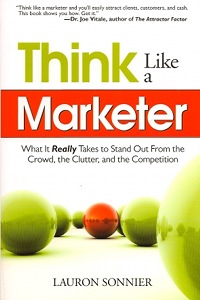Posted by Elena del Valle on November 30, 2009

Manuel Wernicky, president, Adrenalina
Photo, radio ad: Adrenalina
A Spanish language Tecate beer radio ad dubbed Disclaimer by Adrenalina, the ad producer, is noteworthy because of its comic take on the disclaimer sections found in many ads. The ad, which explains why wimpy men who lack character should avoid drinking Tecate, was recently recognized with a silver trophy at the El Ojo de Iberoamérica Festival in Buenos Aires, Argentina.
In a rapid-fire format, the ad indicates that Tecate discourages wimpy men from consuming the Mexican beer. The ad points out that listeners who own dogs named Puchi, Tinkerbell or Princess, or call a girlfriend Baby or Little Smurfette haven’t got what it takes to enjoy Tecate. The beer promoters set out to reaffirm Tecate’s image targeting Mexican men living in the United States who favor the brand.
The Disclaimer Tecate beer radio ad was recorded at the end of January 2009 in Miami and New York at a dual studio recording session at RedCar, Miami with Paco Olavarrieta, in-house voiceover talent and chief creative officer, for the disclaimer portion of the spot; and at Bond, New York with Mexican actor Marco Treviño.
The Adrenalina team for the 2009 Tecate Disclaimer radio spot included Manuel Wernicky, president, chief ideas officer and managing partner; Paco Olavarrieta, chief creative officer and managing partner; Ivar Rodríguez, associate creative director; Daniel Roversi, agency producer; and Yonathan Bendesky, brand leadership.
The ad has been airing via national and regional Spanish-language networks Univision Radio, ESPN Deportes Radio and Lieberman Media since April 2009. According to an agency spokesperson, Adrenalina presented the spot to consumers in research conducted this year and the Disclaimer ad received the most laughs, with consumers reporting the highest recall for the spot and saying that the spot was most memorable for it’s humorous message and use of colloquial phrases.
“El Ojo is further recognition that our team’s creative work resonates among our colleagues in the global advertising community,” said Wernicky.
Adrenalina, the lead agency for Tecate and Tecate Light, recently embarked on its third consecutive advertising and marketing programs for the brands’ distributor, Heineken USA via Cervecería Cuauhtemoc Moctezuma (CCM) of Monterrey, Mexico. New creative for both brands is expected to roll out in early 2010.
El Ojo de Iberoamérica is a marketing and advertising event created to showcase creativity and innovation in advertising, communication, marketing and entertainment in Latin America, Spain and Portugal.
Adrenalina, a New York minority-owned and managed ad agency seeks to create ideas that provoke engagement, experience and emotion between brands and consumers. MDC Partners is a partnership of entrepreneurial firms that offer marketing communications services to clients in North America, Europe and Latin America.
Posted by Elena del Valle on November 18, 2009

E Commerce trends by country - click to enlarge
Chart: Organization for Economic Co-operation and Development (OECD)
According to Empowering E Consumers, a November 2009 report by the Organization for Economic Co-operation and Development (OECD), some of the benefits of the advent of the Internet for consumers around the world include increased competition and lower prices, greater product and services options than offline, and a choice of vendors from around the world at the convenience, time and location of the buyer’s preference.
The report finds that while the retail sector has suffered severely by the current economic crisis, e-commerce has prospered and even exhibited continued growth in many countries. Those trends are the result, in part, of consumers becoming more cost conscious, and increasingly comparison shopping online to save money.
For example, in the United States, while most offline retailers had low sales in the first quarter of 2009, online retail sales for 80 retailers rose by an average of 11 percent. There was a similar pattern in France where the French electronic commerce and distance selling federation estimated that, for the first quarter of 2009, e-commerce sales grew by 26 percent and should increase throughout the year by 20 to 25 percent.
E commerce serves as a business forum for consumers and businesses. Lately, more businesses are going online as a result of the recession. Attracted to the Internet as a means to increase visibility and markets at relatively low cost, business-to-business (B2B) e-commerce showed marked growth. Most online sales in the United States were B2B generated, $3.1 trillion in sales in 2008 compared to $130 billion for sales to consumers.
OECD provides a forum for member governments to compare policy experiences, “seek answers to common problems, identify good practice and coordinate domestic and international policies.
Reach Hispanics online today with
“Marketing to Hispanics Online” audio recording
Identifying and characterizing the booming Hispanic online market



Joel Bary, Alex Carvallo and Matias Perel
Find out about
• The 16 million Latino online users
• Latino online users by gender
• What they do online
• Their language preferences
• How to reach Hispanic urban youth online
• What affects their online behavior
• What influences their purchases
Click here for information about “Marketing to Hispanics Online”
Posted by Elena del Valle on November 11, 2009

Kevin Wise, assistant professor, strategic communication University of Missouri
Photo: University of Missouri
People who search for information online are more likely to trigger greater emotional responses to unpleasant content compared to those who surf and encounter information more casually than those actively searching for it, according to a University of Missouri study funded internally and announced last week.
“If, as these data suggest, the cognitive and emotional impact of online content is greatest when acquired by searching, then Web site sponsors might consider increasing their advertising on pages that tend to be accessed via search engines,” said Kevin Wise, assistant professor of strategic communication and co-director of the Psychological Research on Information and Media Effects (PRIME) Lab at the University of Missouri. “How readers acquire messages online has ramifications for their cognitive and emotional response to those messages. Messages that meet readers’ existing informational needs elicit stronger emotional reactions.”
The results of the study were summarized in an article authored by Wise and Hyo Jung Kim. In the study, researchers, including Wise and two doctoral students, examined how searching for specific content versus surfing a news Web site affected readers’ emotional responses while reading news stories.
The researchers monitored participants’ heart rate, skin conductance and facial musculature to gauge their emotional responses to unpleasant news. The researchers found that unpleasant content triggered greater emotional responses when readers sought the information by searching rather than surfing. In future studies, Wise plans to study the effects of acquiring pleasant content on readers’ emotional responses.
The study, conducted among 92 participants over several months in 2007, indicates that information was better understood and remembered when individuals conducted specific searches for information. Participants came to the laboratory and selected/read news stories from a website (on a computer).
In a previous study, Wise tested the effects of searching and surfing on readers’ responses to images and found similar results. The study, “The Effect of Searching Versus Surfing on Cognitive and Emotional Responses to Online News,” was recently published in the Journal of Media Psychology.
The PRIME (Psychological Research on Information and Media Effects) Lab, part of the Missouri School of Journalism at the University of Missouri, is a research and teaching laboratory devoted to the study of how different features of media affect the way that people think, feel, and act. The staff conduct theory-driven, empirical research using psychophysiology and other behavioral science methods.
Target Latinos effectively by understanding how they shop
“Hispanic Holiday Shopping Patterns” audio recording

Manuel Delgado, CEO Agua Marketing, gives a presentation and participates in an extended Q&A discussion about
- Hispanic shopping patterns national survey
- Why Latino consumers may be more desirable than general market shoppers
- Hispanics holiday shopping patterns and behaviors
Click here for information on “Hispanic Holiday Shopping Patterns” audio recording
Posted by Elena del Valle on November 9, 2009

Hispanic U.S. Citizens by Country of Origin
Click on image to enlarge
While most people with an interest in Hispanic markets know that more than 60 percent of the United States Latino population is comprised of people of Mexican origin, few are aware of the breakdown by country of origin of the remainder. The remaining third come from Puerto Rico, Cuba, El Salvador, Dominican Republic, Guatemala, Colombia, Honduras, Ecuador, and Peru.
Gathering information on ethnicity and country of origin can be challenging and accurate results require additional time and effort for demographic researchers. For example, the concept of ethnicity and country of origin is in itself complex. Individuals self-describe their ethnicity and country of origin relationship when responding to U.S. Census surveys. However, country of origin may differ from country of birth and both may differ from ethnicity. In other words, two individuals from the same family and born in the same country may respond differently to the same question. One may indicate he or she is Latino and the other may not.
Some people born in Los Angeles identify their country of origin as Mexico; some New York natives may also self describe their country of origin as the Dominican Republic or Puerto Rico although the island is part of the United States.
At the same time, the percentage of United States citizens among Latinos varies by country of origin. For example, almost all Puerto Ricans (99.4 percent) are citizens. The groups with the next highest percent of citizens are Cuba, Mexico, Dominican Republic, and Colombia all with more than 60 percent United States citizenship rates, according to updates released by the Pew Hispanic Center on Latino population groups and their characteristics last month.
The Pew Hispanic Center, a project of the Pew Research Center, is a nonpartisan, non-advocacy research organization based in Washington, D.C. and funded by The Pew Charitable Trusts.
Posted by Elena del Valle on October 30, 2009

Think Like a Marketer book cover
Lauron Sonnier, a Houston, Texas based marketing advisor, believes a company can have a strategic advantage in business by thinking, and acting on, marketing thoughts. To make her point she wrote Think Like a Marketer What It Really Takes to Stand Out From the Crowd, the Clutter and the Competition (Career Press, $15.99).
She wrote the book to demystify marketing, she says in the introduction. She hopes to help business executives and owners act with “a level head and fresh perspective” on marketing opportunities that are within easy reach. In her mind, it is essential to understand and think like marketers in order to take advantage of everyday marketing opportunities that are otherwise passing readers by without notice.
The 223-page softcover book is divided into twenty one chapters and six parts: Getting Into a Marketing Mindset; Stir the Pot; Standing Out from the Crowd, the Clutter and the Competition; Establish the Systems That Make Marketing Happen; Talk Like a Marketer; and Keep Marketing in Motion.
Sonnier is president of Sonnier Marketing and Communications, Inc. and has 20 years of marketing experience. In the past, she has worked in television, public relations, and advertising. The Louisiana native is also a public speaker and trainer.

Click here to buy Think Like a Marketer
Posted by Elena del Valle on October 12, 2009

Three Olives Vodka Grape print ad
Video: 5W Public Relations
Earlier this year, Proximo, a spirits importer, launched a new, multi-million dollar television comic advertising campaign for Three Olives Vodka, the brand’s first broadcast outreach. Parallel efforts in print and an online contest will support the What’s Your O-Face? Campaign and its 10 new 30-second television spots. The idea behind the campaign is to emphasize that drinking their vodka is fun and promote the flavors of the company’s vodka line. Scroll down to watch Three Olives Vodka ads.
“The development of our new campaign was driven by research that produced two key findings: first, that consumers felt the fun had been taken out of vodka with virtually all brands scrambling for the same crowded, so-called ‘luxury’ positioning,” said Elwyn Gladstone, vice president of Marketing at Proximo.
“Secondly, the Three-O flavor range has become the benchmark amongst flavored vodkas for its wild, surprising and intense taste experience. These findings are reflected in the hilarious imagery of the new campaign, featuring a series of situations that one would expect to garner a look of shock, but instead are met with a stoic impression. That is, until the subject tastes shockingly delicious Three-O Vodka.”

Three Olives Vodka Root Beer print ad
The $10 million television campaign, created by Agent16, formerly Mezzina Brown & Partners, a New York-based advertising agency, was launched August 31 on cable channels BRAVO and E! Plans were in the works for buys of interactive, expandable rich media on TMZ and Perez Hilton to showcase the complete collection of TV spots, as well as continuing the print campaign in national magazines, including Maxim and US Weekly.
Imported from England Three Olives Vodka is handcrafted in small batches and made from English wheat after quadruple distilling and quadruple filtration. It’s available in 17 flavors including Cherry, Grape, Passion Fruit, Pomegranate, Chocolate, Mango, Root Beer, Tomato, and Triple Shot Espresso, and Bubble, the newest flavor. It sells for $19.99 and up for a 750 milliliter bottle.
Proximo, a family owned company based in New York City, also sells 1800 Tequila, Gran Centenario Tequila, Maestro Dobel Diamond Reposado Tequila, and Ron Matusalem rum.
Posted by Elena del Valle on September 30, 2009
By Bilal Hussain
Journalist and writer

Bilal Hussain, journalist
Photo: Bilal Hussain
Of the many benefits of homeownership tax reimbursement is the most significant one. Unlike other ethnic groups, Latinos are being deprived of this advantage. Among many other disparities that group bears many Latino homeowners don’t receive the full benefit of mortgage interest tax deductions. To add to the disadvantage, in some cases they aren’t even eligible for tax credits.
The interest tax deduction was introduced along with the income tax in 1913, and the mortgage interest tax deduction has since become the favorite tax deduction for millions of U.S. homeowners.
According to the Internal Revenue Service United States Department of Treasury publication 936 (2008) Home Mortgage Interest Deduction, an individual has to fulfill certain conditions to qualify for home mortgage interest deductions.
Click here to read the complete article Latino homeowners shorn of mortgage interest tax deductions
Posted by Elena del Valle on September 30, 2009

Mi Altos website
Photos: MiAltos.com
In October 2007 Juan Carlos Perez Jr. launched MiAltos.com, a website for fans of Jalisco, Mexico, their families and friends. His website is noteworthy because it is based in Ontario, California and 90 percent of his 4,116 registered members (as of September 2009) and 29,480 monthly visitors are in the United States.

Juan Carlos Perez, Jr., owner, MiAltos.com
“Our goal is to reconnect friends and families that have been distanced due to emigration to the United States. Members are able to share and reconnect their lives by sharing pictures, posting blogs, and actively participating in meaningful discussions, said Perez Jr. “MiAltos has been a great success because it caters to a very focused group of people and is able to provide them with content they cannot find anywhere else.
Many of our members had never owned or used a computer before they joined MiAltos. The allure of the site has engaged these members into learning how to utilize computers and the internet, and they have now become regular contributors to the site. Ultimately the members have been the foundation for our success, and we greatly appreciate them.”
Perez Jr. believes the average user is between 18-34 years old and visitors aged 35-49 are also growing quickly. There are slightly more women than men and the typical users are members of middle class working families earning up to $30,000 per year. The largest concentration of users reside in California, Illinois, Iowa, and Texas. There is also measurable usage from Mexico and Spain.
He promotes the site primarily through word of mouth referrals. According to his findings, over 60 percent of the portal’s members found the site that way. The rest relied on organic search engine results, primarily Google and Bing.
Reach Hispanics online today with
“Marketing to Hispanics Online” audio recording
Identifying and characterizing the booming Hispanic online market



Joel Bary, Alex Carvallo and Matias Perel
Find out about
• The 16 million Latino online users
• Latino online users by gender
• What they do online
• Their language preferences
• How to reach Hispanic urban youth online
• What affects their online behavior
• What influences their purchases
Click here for information about “Marketing to Hispanics Online”
Posted by Elena del Valle on September 16, 2009
An expert viewpoint: interview with Xavier Serbia
(Part two of a two part article; part one was published last week)
Click here to read part one of Latinos save less for retirement
By Silvia Pingitore
Journalist, writer and illustrator

When and why did you decide to create a financial website in Spanish? Did you realise there was a lack of financial information in this language?
The website was created in 2003. I realized the lack of quality, well-balanced information in Spanish related to personal finance. Not only did I register a lack of personal finance knowledge amongst Hispanics, but also a lack of transparency in the information delivered to the public. The information available was produced by financial companies and/or financial salespeople portrayed as “unbiased and educational” using mainstream media.
Click here to read part two of Latinos save less for retirement
Reach Hispanics online today with
“Marketing to Hispanics Online” audio recording
Identifying and characterizing the booming Hispanic online market



Joel Bary, Alex Carvallo and Matias Perel
Find out about
• The 16 million Latino online users
• Latino online users by gender
• What they do online
• Their language preferences
• How to reach Hispanic urban youth online
• What affects their online behavior
• What influences their purchases
Click here for information about “Marketing to Hispanics Online”
Posted by Elena del Valle on September 2, 2009

Frank Cooper, CMO of portfolio brands, Pepsi-Cola North America Beverages
Photo: Pepsi-Cola North America Beverages
Americans remain optimistic in spite of the recession and high unemployment, according to a recently released Pepsi Optimism Project (POP) national telephone survey. Ninety six percent of respondents were optimistic about their future. Those surveyed seemed to be more hopeful this year than in 2008 about issues relating to: Relationships with family and friends (91 percent versus 81 percent), overall well-being (88 percent versus 84 percent), health (86 percent versus 78 percent), finances (77 percent versus 64 percent), and chances of finding love (70 percent versus 61 percent).
“In 2008, our POP research informed us that there was a collective and contagious sense of optimism pervading the youth mindset. This year we see that same spirit of optimism is not only pervasive among the millennial generation but across all demographics,” said Frank Cooper, chief marketing officer of portfolio brands, Pepsi-Cola North America Beverages. “Representing a brand that has become synonymous with the spirit of youth and optimism, those of us at Pepsi are continuously encouraged by the resilience of Americans, across all ages, races, sex, location and economic background, people are embracing optimism, even in the most uncertain of times.”
The survey found African-American respondents were more optimistic than other ethnic groups. While 72 percent of African-Americans who responded to the survey were significantly more likely than whites (53 percent) or Latinos (60 percent) to expect more good things to happen to them than bad; and 62 percent of African-Americans were significantly more likely to associate the word “necessary” with optimism than whites (51 percent) and Latinos (52 percent). Wall Street types were also more optimistic than regular workers; 64 percent of city dwellers indicated they are more likely to be optimistic about an economic recovery than their counterparts (53 percent).
As part of the Pepsi Optimism Project, researchers surveyed 1,280 people 18 and older in the United States between June 11 and June 15 and between June 18 and June 22, 2009. The ongoing project tracks the national level of optimism on a quarterly basis, by measuring the national state of optimism via a composite score. Analysts determine the national optimism level by scoring and totaling American’s responses to survey questions about their overall sense of optimism, their sense of optimism about their personal lives, their optimism about the world and their optimism about the future.
The Optimism Survey was conducted on behalf of PepsiCo by StrategyOne, a New York strategic consulting. In addition to random digit dialing to ensure national representation, and computer-assisted telephone interviewing for optimal accuracy, a supplementary sample of Hispanics (N=186) and African-Americans (N=170) were surveyed.
The Pepsi-Cola North America Beverages (PCNAB), a division of PepsiCo, portfolio features Pepsi, Mountain Dew, Sierra Mist and Mug soft drinks. According to promotional materials, PepsiCo, has one of the largest roster of billion-dollar food and beverage brands, including 18 different product lines that each generate more than $1 billion in annual retail sales in over 200 countries. According to promotional materials, PepsiCo employs 198,000 people and in 2008 it generated more than $43 billion in revenues. A public relations representative of the company declined to share any information on the ethnic breakdown of customers, employees or their product preferences.
“Happy for No Reason” audio recording

Presenter Marci Shimoff, author, Happy for No Reason
What: An audio presentation by Marci Shimoff and Q&A with Marci Shimoff and HispanicMPR.com audio program host Elena del Valle about finding happiness.
Available exclusively on HispanicMPR.com!
Click here to listen to a short interview with Marci
Click here for more information on “Happy for No Reason” audio recording with Marci Shimoff



























